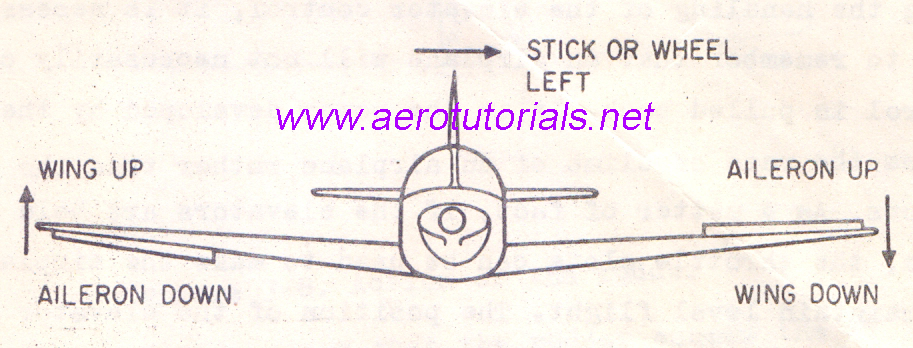Aileron…..

An aileron may be defined as a movable control surface attached to the trailing edge of a wing to control and airplane in roll, that is rotation about the longitudinal axis . The conventional monoplane has two ailerons, one attached to each wing. They are rigged so that when one is applying an upward force to one wing, the other is applying a downward force to the opposite wing. The ailerons are moved by means of a control stick or a wheel in the cockpit. If it desired to roll the airplane to the right, the stick is moved to the right or the wheel is turned to right. After the desired degree of bank is obtained, the stick or wheel is returned to neutral to stop the roll. During normal turns of an airplane the movement of the aileron is coordinated with movements of the rudder and elevators to provide a banked horizontal turn without a “slip” or “skid”. A slip, or side slip, is a movement of an airplane partially sideways. In a turn the slip is downward and inward toward the turn. A skid in a turn is a movement of the airplane sideways and outward from the turn. The correct rigging of the aileron is of a primary importance. After an airplane has been overhauled and during preflight inspections, the direction of aileron movement with respect to control stick movement must be carefully noted. If the stick or wheel is moved to the right, the aileron must move up and the left aileron must move down. Reverse movement of the control should then cause a reverse of the position of the ailerons. During flight of an airplane, a down movement of the aileron causes an increase in lift for the wing and the wing rises. At the same time the opposite aileron moves up and causes a decrease in lift for the opposite wing and this wing moves down. Aileron control in an airplane is complicated somewhat by an effect called adverse yaw. An aileron that moves down at the trailing edge of a wing creates considerably more drag than the aileron on the opposite wing that moves upward the same amount. Therefore, if the aileron were rigged to move the same distance in response to the movement of the cockpit control, the drag of the downward moving aileron would cause the airplane to turn toward the side on which the downward moving aileron is located. Thus, a pilot wishing to make a left turn would move the control to the left, causing the right aileron to move downward, but the drag caused by the aileron would cause the airplane to turn to the right except for strong rudder control. To overcome adverse yaw , the aileron of an airplane are rigged for differential movement. The differential control causes the up-moving aileron to move a greater distance than the down-moving aileron. The amount of differential is sufficient to balance the drag between the ailerons, thus eliminating the yaw effect. It was mentioned that conventional monoplanes are equipped with two ailerons, one being attached to the trailing edge of each wing. This does not apply to modern jet airliners. These high speed airplanes usually employ at least two sets of ailerons. At low speeds all the ailerons are used, but at high speeds only one small pair of ailerons is required because the effectiveness of aileron control increases with speed and because spoilers are used with the ailerons for effective control at high speeds. A spoiler destroys lift and increase drag.
